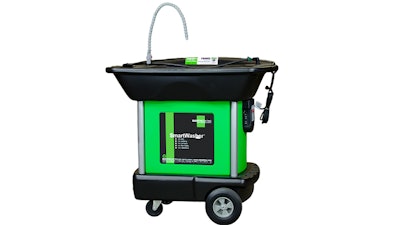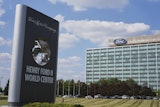
Bioremediation technology is a popular commercial method for environmental cleanup because in many cases remediation is accomplished at the contamination site. It was not until 1989 during the Exxon Valdez oil spill in Alaska that the technology received its greatest promotion. In the MRO arena, regulations for use of more environmentally friendly solvents in industrial cleaners continues to push forward and it is where this commercially proven technology has found its way into the parts washer product segment.
Regulations surrounding cleaners and degreasers centers on the use of solvents that are deemed to be major contributors to ground level ozone formation and harmful to humans.1 Calculation based on the number of solvent parts washers in the market estimates that 1.6 billion pounds of hazardous waste is hauled away for disposal each year.2 Disposal and replenishment of clean solvent usually results in the need for a service contract between the hauler and the client. Service contracts can be costly, ranging anywhere from $200-$400 per month.3
In addition, parts washer manufacturers have introduced aqueous based parts washers. These systems, while offering increased productivity, can be quite costly. In most cases the aqueous parts washers require the user to dispose of aqueous hazardous waste which, again, requires a contract for removal of the waste.
Newer aqueous parts washers with bioremediation capability are in the market today. What is unique about these parts washing systems is that they incorporate performance cleaning with bioremediation of generated waste. Cleaning performance of the fluids is reported to be better or equal to the solvents customers used previously.4 The fluids are aqueous, low VOC, nonflammable vapors, pH neutral such that they will not cause skin irritation or dermatitis, offering a safer choice for workers involved in the cleaning process. The naturally occurring microbes eat oils, fats and greases and use them as a source of energy to generate new microbes to continue bioremediation and eliminating liquid waste generation. In fact, waste generated under normal operating conditions is 7.2 pounds of solid waste per year.5 This is a significant improvement over that of the solvent where 832 pounds is generated by a 16-gallon parts washer that is serviced every 6 weeks.6
Finally, the simple design is especially conducive to a self-service model since very little maintenance is need to keep the unit running at optimal performance.
In summary, a bioremediation parts washers is a cost competitive investment, does not require routine liquid waste disposal, and is designed for self-service maintenance eliminating the need for contracts.
CRC is proud supplier of the CRC SmartWasher Bioremediating Parts Washing System with Ozzy Inside delivering “Safety, Prevention, and Sustainability for You and the Environment.” For more information, visit www.crcindustries.com.
Citations:
1 Ozone Pollution at epa.gov, Excerpt: “Ground level or “bad” ozone is not emitted directly into the air, but is created by chemical reactions between oxides of nitrogen (NOx) and volatile organic compounds (VOC) in the presence of sunlight. Emissions from industrial facilities and electric utilities, motor vehicle exhaust, gasoline vapors, and chemical solvents are some of the major sources of NOx and VOC. Breathing ozone can trigger a variety of health problems, particularly for children, the elderly, and people of all ages who have lung diseases such as asthma. Ground level ozone can also have harmful effects on sensitive vegetation and ecosystems.”
2 Internal estimate based on reported numbers by solvent based parts washer enterprises.
3 Customer provided data.
4 Bioremediation parts washer customer testimonials.
5 Calculated using weight and expected 12 unit use of OzzyMat® filter.
6 See “Do the Math” application on www.chemfree.com website.























